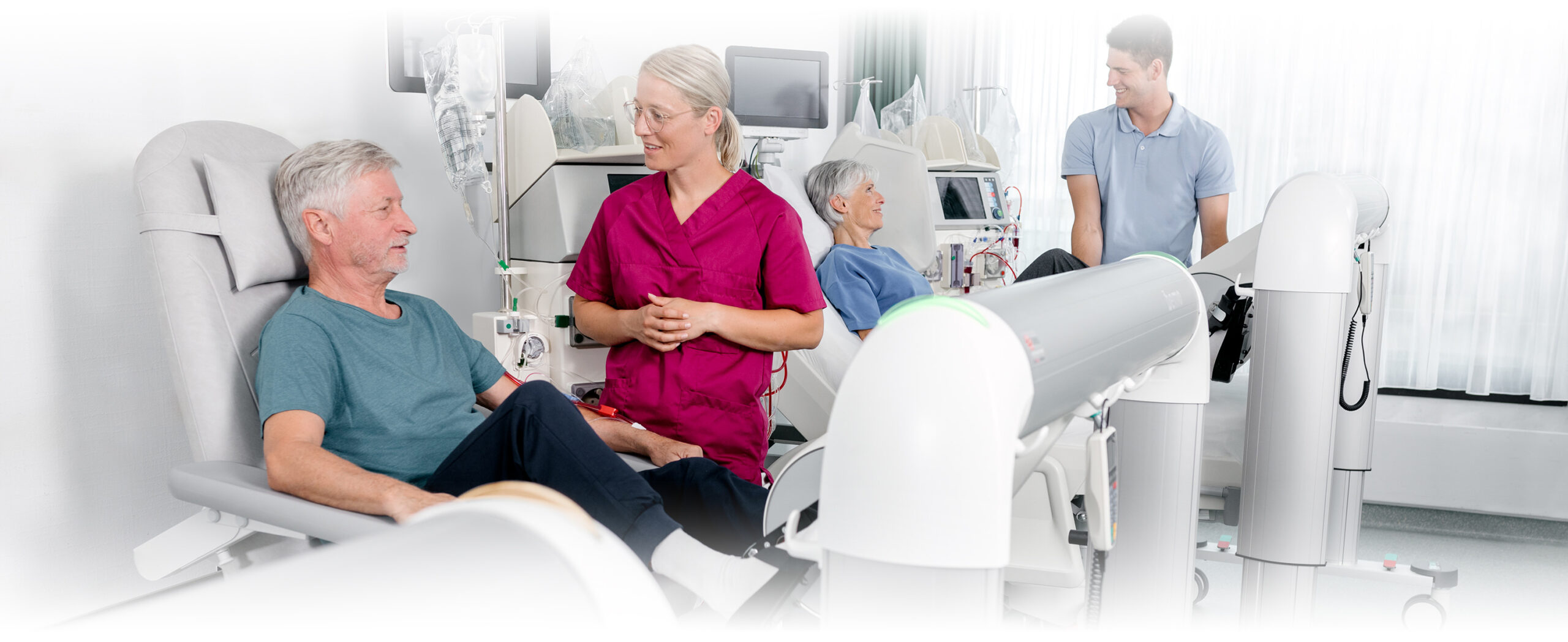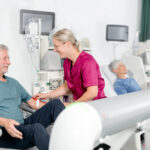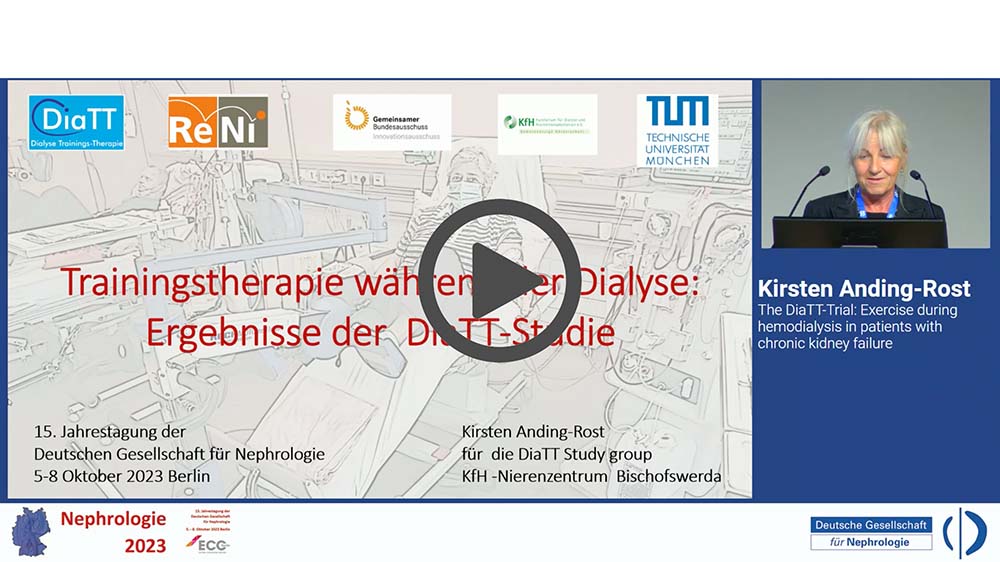×
Exercise during Hemodialysis in Patients with Chronic Kidney Failure
Authors: Kirsten Anding-Rost, M.D., Gero von Gersdorff, M.D., Pia von Korn, Ph.D., Gabriele Ihorst, Ph.D., Anika Josef, Ph.D., Margit Kaufmann, Ph.D., Maria Huber, Ph.D., Thomas Bär, M.Sc., Sven Zeißler, Ph.D., Stefan Höfling, M.A., Cornelia Breuer, Ph.D., Nadine Gärtner, B.Sc., Mark J. Haykowsky, Ph.D., Stefan Degenhardt, M.D., Christoph Wanner, M.D., and Martin Halle, M.D.
Published June 17, 2023 | NEJM Evid 2023;2(9) | DOI: 10.1056/EVIDoa2300057
BACKGROUND: Patients with kidney failure undergoing hemodialysis experience physical deconditioning and multimorbidity. Exercise interventions may mitigate this outcome, but their clinical role is unclear.
METHODS: This multicenter, cluster randomized controlled trial evaluated combined endurance and resistance exercise training during hemodialysis versus usual care in chronic kidney failure. It assessed physical functioning, quality of life, hospitalizations, and overall survival. The primary outcome was the change in the 60-second sit-to-stand test (STS60) between baseline and 12 months.
RESULTS: A total of 1211 patients underwent randomization, 917 (65.9±14.4 years; 38.9% female) of whom were included in the full analysis (exercise intervention, n=446; usual care, n=471). At 12 months, the STS60 repetitions improved from 16.2±7.6 to 19.2±9.1 in the exercise group but declined from 16.2±7.1 to 14.7±7.9 in the usual care group (group difference, 3.85 repetitions; 95% confidence interval [CI], 2.22 to 5.48; P<0.0001). The timed up-and-go test (−1.1 seconds; 95% CI, −1.9 to −0.3) and the 6-minute walk test (37.5 m; 95% CI, 14.7 to 60.4) also differed in the exercise group versus usual care group. The physical summary score and vitality subscale of the quality of life questionnaire (i.e., the 36-item Short Form Health Survey) differed in the exercise group versus usual care group, but the other subscales did not change. Adverse events during dialysis sessions were similar in both groups. Median days spent in the hospital annually were 2 in the exercise group and 5 in the usual care group. Mortality and dialysis-specific adverse events were not affected.
CONCLUSIONS: Twelve months of intradialytic exercise in patients with kidney failure significantly improved the STS60 compared with usual care.







